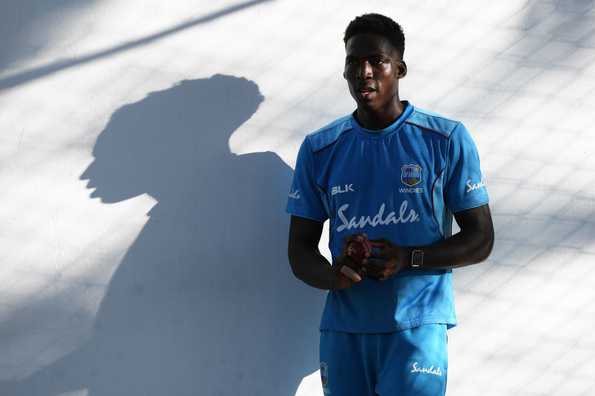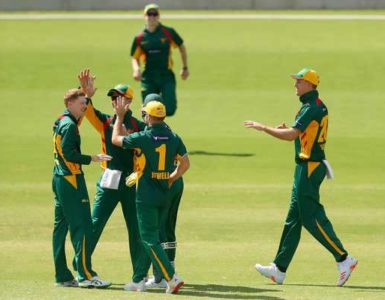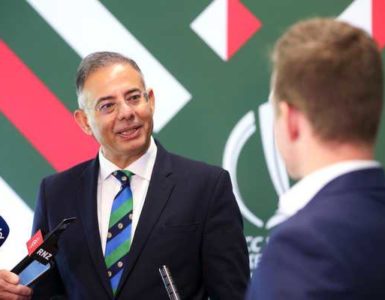WEST INDIES TOUR OF ENGLAND, 2020

“I’ve worked with Chemar for the past couple of years. We are good friends, we communicate well. He asks lots of questions, that’s what I like about him.” – Roach © Getty
The tradition of West Indian fast-bowling is a rich one. But that tradition has largely lain dormant since the retirements of Curtly Ambrose and Courtney Walsh in 2000 and 2001. West Indian fast-bowling, once such a bastion of pace, skill and aggression which terrified opposition teams, has been rather insipid for most of the 21st Century.
Since the turn of the millennium, there have been plenty who have showed flickers of potential but few who have stayed the course. No West Indian fast-bowler has taken more than 200 wickets in that period. Only six have passed the 100 wicket mark and only two of those – Kemar Roach and Jason Holder – have averaged less than 30 while doing so. Courtney Walsh lies eighth on the list of West Indian wicket takers since the start of the year 2000 and he retired in 2001.
By contrast, during that same period five England fast-bowlers have taken more than 200 Test wickets. James Anderson has more than 500 and Stuart Broad more than 400. Similarly, six Australian and six South African fast-bowlers have taken more than 200 Test wickets each with five of those twelve each passing 300 Test wickets. Dale Steyn ended up with more than 400.
Things are, however, beginning to turn for West Indies. Roach will hope to pick up the seven scalps he needs to pass the 200 wicket mark during the upcoming series with England while Shannon Gabriel and Holder are both into three figures. In last year’s series against England in the Caribbean, Alzarri Joseph, just 22 years-old, showed the rich promise he has with 10 wickets at 23.80. It is a potent, all-round pace attack.
But just as important for the future of West Indian cricket, behind those four first-choice fast-bowlers, is a batch of highly promising young quicks.
Chemar Holder took 36 wickets at less than 20 in the West Indies’ first-class competition for Barbados this season. Oshane Thomas is arguably the quickest bowler in the Caribbean and has already shown what he can do in ODI cricket. Keon Harding, another Bajan, averages 25 with the ball and picks up a wicket every six and a half overs. Keemo Paul, an explosive all-rounder, opted against touring England this summer but played in the third Test against them in last year’s series. All these bowlers are 23 or under.
“I’ve worked with Chemar for the past couple of years,” Roach said. “We are good friends, we communicate well. He asks lots of questions, that’s what I like about him. His work ethic is amazing. The future of West Indies fast-bowling is in good hands with him around. There are other guys as well.
“Oshane is probably one of the fastest bowlers in the Caribbean. He has a great future and so does Keon Harding. It’s good for West Indies fast-bowling. They’re the future. I’m very excited. I’m looking forward to working with the younger guys to take West Indies fast-bowling to the next level.”
The resurgence in West Indies quick bowling has, according to Roach, been as a result of improved pitches at domestic level. For much of the last decade, surfaces in the Caribbean were almost sub-continental in nature, batting shirtfronts, devoid of pace and bounce. A change of policy from Cricket West Indies, supported also by the Caribbean Premier League, has seen the surfaces offer a lot more for the faster men in the past couple of years.
“The pitches in the Caribbean have improved,” Roach said. “The curators have done a fantastic job producing bouncier and greener pitches. It breeds more fast-bowlers. We always had a history of fast-bowlers, we just needed a pitch to bowl on. We have done a fantastic job over the past couple of years. If we continue to work hard, some great things are ahead for us.”
The success of a four-pronged pace attack, on pitches which suited them, was the main reason for West Indies’ series victory against England at the start of last year. Roach, Gabriel, Holder and Joseph took 44 wickets between them – and Holder missed the final Test. Their pace and aggression clearly unsettled the English batsmen, who were routed for 77 in the first innings of the opening Test in Birdgetown. Roach took 5 for 17, setting West Indies on the way to reclaiming the Wisden Trophy.
The 31 year-old said that West Indies’ modus operandi from last year’s series is unlikely to change much which means England’s batsmen should brace themselves for more hostility in next month’s series. With two Tests at Emirates Old Trafford, one of the quickest and bounciest pitches in the country, the West Indies’ bowlers may find conditions to their liking, too.
“They’re different conditions obviously to the Caribbean,” Roach said. “The ball does a little bit more so we will have to adjust our plans. I don’t think our mode of attack is going to change much. We saw it in the Caribbean and it’s pretty fresh in our minds. It’s always going to be tough to play England but once we get stuck into them, we stand a great chance of being England. Obviously we are going to take it to them, for sure.”
Talk is cheap, as they say, but Roach and company proved in last year’s series against England that they have the ability to back it up. And with a crop of hungry young quicks creating more depth than at any time since Walsh and Ambrose’s heyday, perhaps West Indies’ fast-bowling is finally on the verge of a sustained resurgence. It’s about time.
© Fame Dubai




